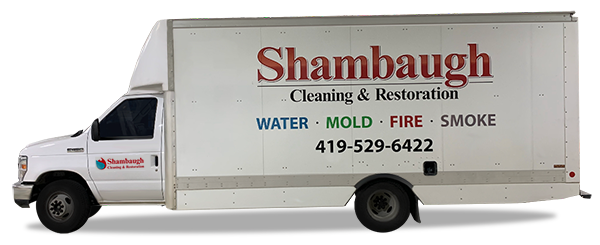Fixing old water damage requires a systematic approach to ensure effective restoration and prevent further damage. The first step is to identify and address the source of the water damage by fixing any leaks or plumbing issues. Once the source is resolved, the affected area should be thoroughly dried out to prevent the growth of mold or mildew. Porous materials like carpet or insulation may need to be removed and replaced if they have been soaked. Remaining materials should be disinfected to create a clean environment for repairs.
To restore the damaged area, it is important to prioritize the repair of ceilings and any severely warped or rotting wood. If the flooring has been affected, it may need to be replaced with waterproof materials. Drywall should be replaced if it has swelled or sagged significantly, otherwise, the water-stained portion can be cut out and repaired. External siding should also be inspected and replaced if necessary to prevent further damage.
After all the necessary repairs have been made, the area should be caulked, painted, and sealed to minimize the risk of future water problems. It is also advisable for homeowners to check their insurance coverage to determine what repairs are covered and if any financial assistance is available.
Key Takeaways:
- Fixing old water damage requires identifying and addressing the source of the water.
- Thoroughly drying out the affected area is essential to prevent mold and mildew growth.
- Porous materials like carpet or insulation may need to be removed and replaced if soaked.
- Priority should be given to repairing ceilings and severely damaged wood.
- Flooring may need to be replaced with waterproof materials if affected by water damage.
Identifying and addressing the source of water damage
Before starting any repairs, it is essential to identify and address the source of the water damage to prevent recurrence and ensure a successful restoration process. Water damage can stem from various sources, including leaky pipes, roof leaks, faulty appliances, or even natural disasters like flooding. By pinpointing the exact cause, you can take the necessary steps to fix the problem at its root.
To begin the assessment, visually inspect the affected area for any visible signs of water intrusion. Look for stains, discoloration, or water pooling. It is also important to check nearby areas and fixtures, as water can travel and cause damage beyond its initial point of entry. Additionally, consider any recent events or incidents that may have contributed to the water damage, such as heavy rains or plumbing issues.
In some cases, a professional water damage specialist may be needed to conduct a more comprehensive assessment using specialized equipment. They can identify hidden sources of water and assess the extent of the damage, providing valuable insights for an effective restoration plan.
Drying out and disinfecting the affected area
After fixing the source of water damage, it is crucial to thoroughly dry out and disinfect the affected area to mitigate further damage and create a safe environment for repairs. Excess moisture can lead to mold and mildew growth, which can cause additional structural problems and pose health risks to occupants. Here are the key steps to properly dry out and disinfect the area:
Drying out the affected area
The first step in the process is to remove any standing water or moisture using specialized equipment like industrial-grade dehumidifiers and high-powered fans. These tools help expedite the drying process by removing excess moisture from the air and surfaces. It’s important to ensure proper ventilation during this stage to improve airflow and aid in the evaporation of moisture. In some cases, it might be necessary to remove water-damaged materials, such as saturated carpets or insulation, to facilitate drying and prevent mold growth.
Disinfecting remaining materials
Once the area is dry, it’s essential to disinfect the remaining materials to eliminate any bacteria, fungi, or other harmful microorganisms. This is particularly important if the water damage was caused by flooding or sewage backup. Using appropriate disinfectants recommended by professionals, thoroughly clean and treat the affected surfaces, including walls, floors, and furniture. It’s crucial to follow the manufacturer’s instructions and safety guidelines when using disinfectants to ensure effective results and minimize any health hazards.
Remember, it’s important to wear protective gear like gloves and masks when handling potentially contaminated materials and disinfectants.
Seek professional assistance
Drying out and disinfecting the affected area after water damage can be a time-consuming and labor-intensive process. To ensure thorough and effective cleaning, it’s advisable to seek professional assistance from water damage restoration specialists. These experts have the knowledge, experience, and specialized equipment to properly assess the extent of the damage, implement appropriate drying techniques, and carry out effective disinfection protocols. Hiring professionals can help you save time, prevent further damage, and ensure a safe environment for repairs.
Addressing specific areas and materials
Depending on the extent of the water damage, specific areas and materials may require specialized repair or replacement to restore the affected space. Ceilings that have been damaged should be addressed first, as they can pose a safety risk if left untreated. Any severely warped or rotting wood should be replaced to ensure structural integrity.
If the water damage has affected the flooring, it may be necessary to replace it with waterproof materials. This is especially important in areas prone to moisture, such as bathrooms or basements. Carpet and padding that have been soaked may need to be removed and replaced to prevent mold growth.
Drywall Repair
Drywall can also be heavily impacted by water damage. If it has swelled or sagged significantly, it should be replaced entirely. However, if the damage is minimal, the water-stained portion can be cut out and repaired. In this case, it is important to thoroughly dry the area and apply a mold-resistant primer before patching and painting.
External siding should also be inspected for water damage. If it has been compromised, it may need to be replaced to prevent further issues. Properly addressing these specific areas and materials is crucial to restoring the affected space and ensuring its long-term durability.
Finishing touches and insurance coverage
Once the necessary repairs and replacements have been completed, adding finishing touches like caulking, painting, and sealing can help prevent future water damage and maintain the integrity of the restored area.
Proper caulking around windows, doors, and other vulnerable areas can create a watertight seal, preventing any potential leaks from causing further damage. Additionally, a fresh coat of paint not only enhances the aesthetics of the space but also adds an extra layer of protection against moisture. It’s important to use a high-quality, waterproof paint that is specifically designed for areas prone to water exposure.
Sealing the restored area is another crucial step. This can be done using a water-resistant sealant that creates a barrier against moisture infiltration. Applying sealant to areas such as grout lines, tile edges, and joints can prevent water from seeping in and causing damage to the underlying structures.
Furthermore, it’s essential for homeowners to review their insurance coverage to determine if the repairs needed for old water damage are covered. Water damage specialists can assist with providing accurate documentation and assessments for insurance purposes. Consulting with experts in water damage restoration can help navigate the insurance claims process and ensure that all eligible repairs are covered.






